yourHEALTH
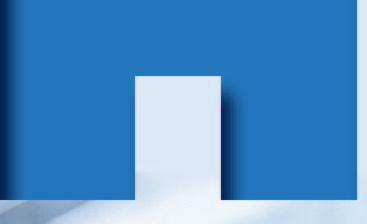












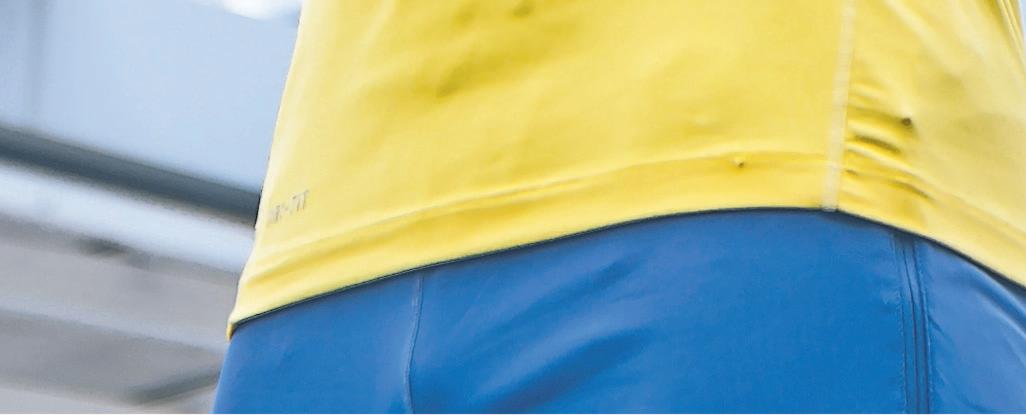
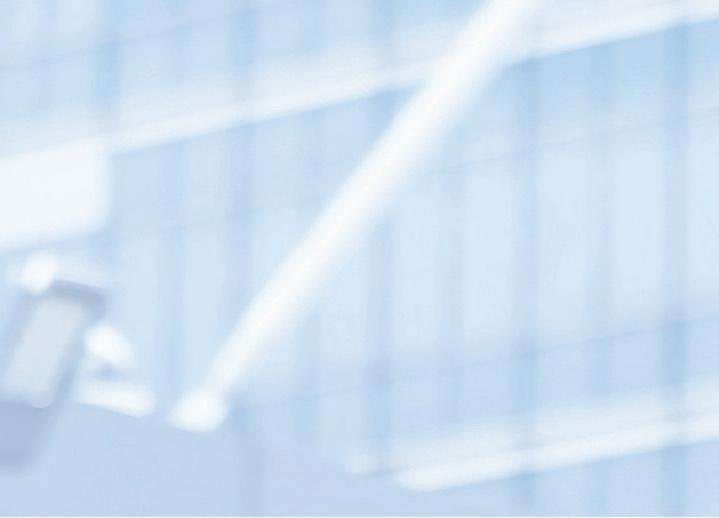

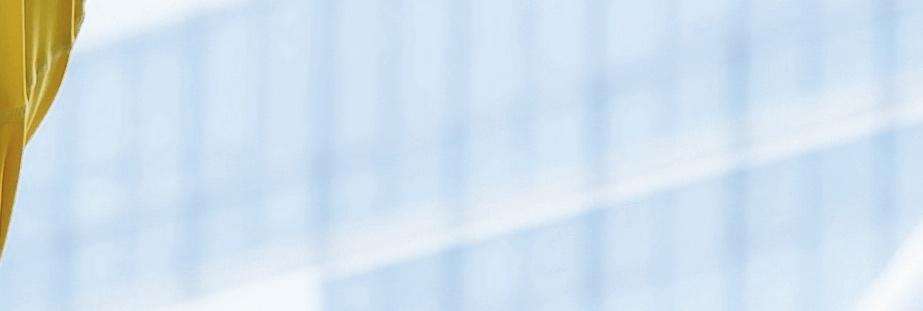
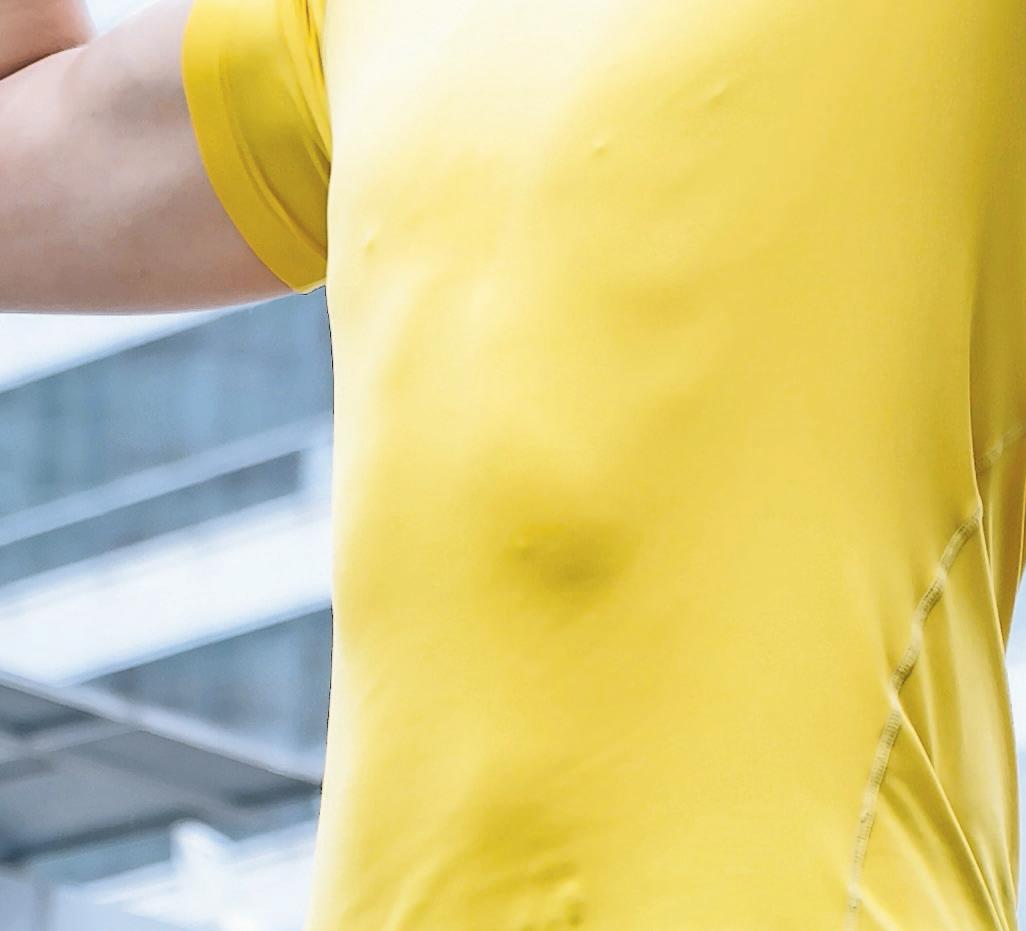
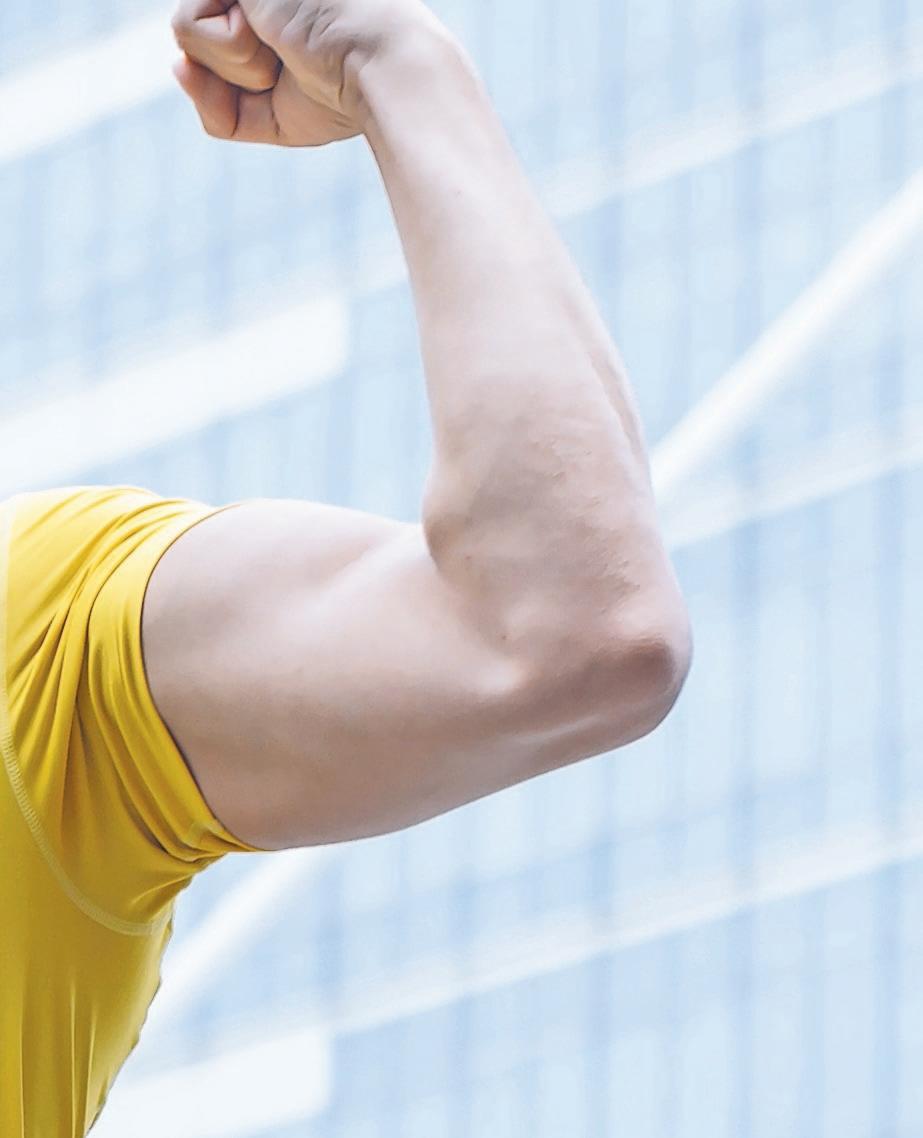
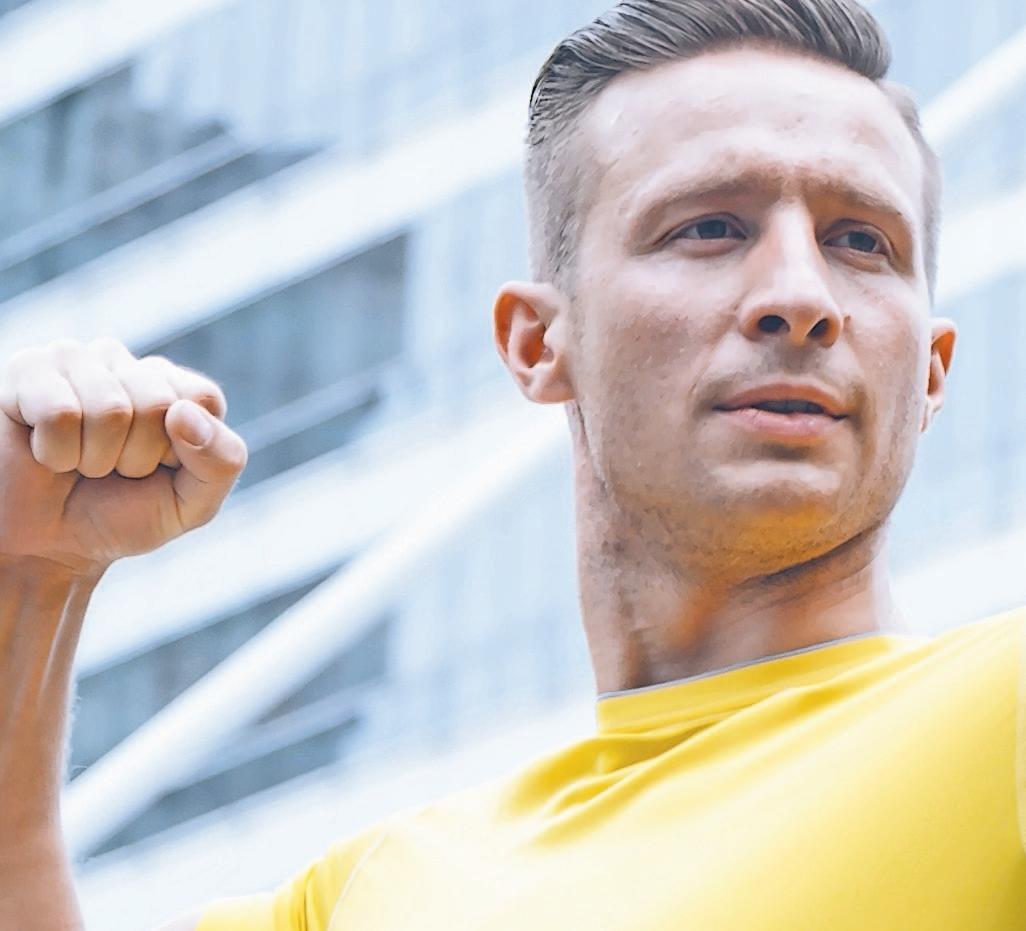
with a focus on:


MEN’S















































Let’s face it. Traditionally, men are awful at talking about their overall emotional well-being, and feelings in general.“Good” is the general reply when asked. I’m “fine.” Even though, according to the latest available numbers, men die by suicide 3.63 times more often than women. 70 percent of all suicides are men.
Sound scary? It shouldn’t. Because guys, you can do something about this. You CAN take more control of your mental health and what you’re feeling.
Mental health concerns, such as anxiety and depression, clearly affect men too, but they can be hard to talk about, especially with their health care providers.

“Traditionally, many men are taught not to express their feelings, such as sadness or anger,” says Siraj Abdullah, D.O., a family medicine physician. “In addition, medical providers don’t during routine visits and these issues.”
both men and women, men in my clinic for says. “I see mental ages, from college stucan sometimes maniin women. Dr. on the lookout for and talking less hobbies they once symptoms like:
Take action
Even if you’re feeling pretty good right now, stay focused on what you need to do to improve your overall mental health and emotional wellbeing, and surf the inevitable waves of life when they do roll in.
Build social connections. As Dr. Abdullah says:“We’re all social beings. It’s important to have a good social support group, whether that’s your family or your friends. Look for people who are positive, have an open mind and are supportive.” Engage in a hobby. Having a hobby you enjoy can also support your mental well-being. So, whether you love hiking, woodworking, cooking, sports, working out, swimming, gardening, traveling, reading or watching movies, make time for the activities you enjoy.
Get regular exercise. Multiple research studies show that getting 20 minutes of physical activity three times per week reduces the risk of depression and anxiety, he says. This includes any form of exercise that increases your heart rate, such as walking, running, hiking, swimming, cycling or high-intensity interval training (HIIT). Nourish your body. Eat fresh, whole foods as much as possible. This includes lean protein, healthy fats, vegetables, fruit and whole grains. Limit alcohol, sugar, processed food and refined carbohydrates.
It’s OK to seek help
If lifestyle changes don’t make a difference, have a conversation with your health care provider. They may recommend counseling, medication or other lifestyle changes to help you feel better.
If you have thoughts of harming yourself or others, contact your health care provider, call 911 or visit the emergency department right away. You can also contact one of the following emergency hotlines:
The National Suicide Prevention Lifeline: 1-800-273-TALK (8255) or call or text 988
SAMHSA’s National Helpline: 1-800-662-HELP (4357)
NAMI Helpline: 1-800-950-NAMI (6264) or text “NAMI” to 741741
Dr. Abdullah also advises to be aware of the factors that can contribute to poor mental health: social isolation; lack of physical activity; overeating junk food, particularly processed, high-sugar foods; and major life stressors, such as job loss, divorce, financial issues, illness, the death of a loved one, a move or a new job.



And, of course, as we’re all aware, the pandemic likely contributed to the increase in mental health issues for everyone.
“Many people experienced trauma and major life changes, such as working from home full-time, lack of socialization, homeschooling children, dealing with illness, the death of a loved one or relationship issues,” Dr. Abdullah says.

Finally, know that getting help is a sign of strength, not weakness.
“It’s a sign of strength to talk about these issues with your health care provider, counselor or a supportive family member or friend,” says Dr. Abdullah. “As men, we tend to let stress build up until it affects our mental and physical health. Talking about your mental health is a way to take care of your body.”
time to change that.


June is Men’s Health Month. It’s celebrated across the country with a variety of preventative screenings, health fairs, and other education and outreach events —as a reminder for men to take steps to be healthier. But why the need for an entire month devoted to your health? Because most of you are stubborn.
A large number of men don’t actively engage in preventative health or the healthcare system early in life. And the older you guys get, the less likely you are to get involved. There are plenty of excuses. You’re too busy. It’s too expensive. You feel fine. Or the worst of all, “I don’t get sick.”
Heart disease, cancers, unintentional injuries, diabetes, suicide and stroke are some of the top causes of death for men. Many of these have early signs and symptoms, and can be prevented and treated if caught early. But society has traditionally expected boys to be tough and ignore pain. So you push through symptoms and hide your feelings, thinking this makes you more of a man. Unfortunately, that just makes you more likely to die from these conditions. In fact, the Men’s Health Caucus reports you will live about five years less than women.
Don’t miss your regular check-ups and screenings. A recent survey found that 25 percent of men who were sick or in pain would wait as long as possible to see a doctor (Is there a prize you are trying to win?) and 17 percent would wait at least a week after the first onset of illness.
If you have signs and symptoms of some of the most common diseases and illnesses, such as chest pain, shortness of breath, excessive thirst, urination problems, fevers, weight loss, numbness or persistent headaches, (basically anything that causes you to not feel like you) get yourself to the doctor. And preventative medicine? It prevents things! Keep up with your vaccines, your annual physical, and screenings like a colonoscopy. They’re important. Just because you feel well doesn’t mean that you are well.
Get Moving
Yes, we all know that physical activity reduces your chance for many illnesses and diseases. So make it a priority. It’s good for the body and the mind. Studies show that adults need at least two and a half hours of moderate intense aerobic activity every week and muscle strengthening activities two or more days a week. Feeling tense or sluggish? Regular exercise, as little as 20 minutes a day, can improve your mood and energy level, decrease stress and boost brainpower.
Make Healthy Food Choices
Belly up to the produce section of your local farmer’s market or grocery store and stock up on a variety of fruits and vegetables. Consume food and drinks high in calories, sugar, salt and fat in moderation. These unhealthy foods should be an extremely limited part of your diet.
They might taste really good, but they are slowly killing you. Choose healthier alternatives for more snacks and meals and you’ll live to eat another day.
Find A Healthy Weight And Keep It There
This goes along with the exercise and food choices. We all pack on a few extra pounds as we get older. It’s the nature of the old age beast. But know your BMI and keep an eye on it. If you’re on the last setting of your expandable waistband, it’s probably time to get some exercise, review your diet and make an appointment with your doctor.
What exactly is moderation? Two drinks per day for men under the age of 65, and just one drink a day for men 65 and older. Some studies indicate health benefits of moderate alcohol consumption, though those may not help all who choose to imbibe. In some cases, it may be safer to avoid alcohol entirely and the positives may not outweigh the risks.
But if you’re going to drink? Don’t drive. Male drivers involved in fatal motor vehicle crashes are almost twice as likely as female drivers to be intoxicated with a blood alcohol concentration of 0.08 percent or higher.
A lot of the men are workaholics and seem to thrive on stress. Note the word “seem.” You aren’t thriving. Stress leads to higher blood pressure, diabetes, heart disease, accelerated risk for prostate cancer and even erectile dysfunction. And though ED won’t kill you, it might make you more stressed! Stress and anxiety also play a big part in depression, and many men resist getting help for depression or don’t recognize the signs.
Stop checking your email at home or kick off early now and again. And those of you with umpteen weeks of accumulated vacation days? You aren’t heroic. No one dies saying they wish they’d worked more.
Many of you are up late at night even though you have to be up at 7 a.m. Or brag about how you don’t need more than four to five hours of sleep a night.
Not according to the National Sleep Foundation, which says that your body requires seven to nine hours of sleep a night to stay healthy.
Lack of proper rest is associated with an increased risk of cardiovascular disease, diabetes, obesity and depression as well as accidents involving motor vehicles and machinery. So power down and hop under the covers.
You’ll gain that extra time on the back end.
The popularity of yoga has grown considerably in the 21st century. But while women have embraced yoga en masse, men have been more hesitant to do so.
A recent survey from Yoga Journal found that, among the 20 million yoga practitioners in the United States, only 18 percent were men. While those figures might have risen in recent years, anyone who has recently visited a yoga studio can attest that the participants in many classes remain overwhelmingly female.
That’s unfortunate for men, who can benefit from practicing yoga in myriad ways.
The misconception is that yoga is a lighter form of fitness training, better suited to women, may cause some men to miss out on the health benefits. One reason for this misconception is that yoga has become associated with flexibility rather than strength. However, evidence shows that the mind-body practice can also be very effective in increasing overall strength and building muscle, making it a valuable part of any guy’s fitness routine.
<bold>Yoga can protect against muscle imbalances. <bold>Yoga requires various muscle groups to work together to perform certain exercises. This can reduce the risk of muscle imbalances that can develop when men design workout routines that target specific muscle groups.
<bold>Yoga can improve flexibility.<bold> When performed correctly, various yoga exercises improve flexibility. For example, the big toe pose can help men and women lengthen and strengthen their hamstrings, while the downward facing dog pose stretches various areas of the body, including the shoulders, calves and arches. Yoga is not the only way for men to improve their flexibility, but it can be an effective supplement to exercise routines for men who routinely feel tight after traditional strength training sessions.
<bold>Yoga can improve stamina.<bold> Numerous studies have indicated the positive effects yoga can have on muscle endurance. Researchers at the University of Wisconsin, La Crosse, have found that the regular practice of Hatha yoga provided a significant boost to chest and abdominal strength and endurance. Such improved stamina can have a trickle-down effect on men who practice yoga and also adhere to strength training regimens and/ or participate in competitive sports.
<bold>Yoga can help men maintain healthy weights. <bold>The Harvard Medical School notes that researchers discovered that people who practiced yoga for at least 30 minutes once a week for at least four years gained less weight during middle adulthood than those who did not. That might be linked to additional research that found people who practiced yoga were more mindful eaters than those who did not, making them less likely to overeat, eat when sad or stressed or eat in response to certain cues, including the smell of food.


In early 2019, Jimmie Luvert, 72, was having increasing difficulty passing urine. He scheduled an appointment with his physician, who referred him to Mount Sinai South Nassau urologist Daniel McCally, MD. Dr. McCally performed a prostate-specific antigen (PSA) test that showed that the level of PSA in Mr. Luvert’s blood was elevated, an indicator of prostate cancer.
Dr. McCally referred Mr. Luvert to Michael Herman, MD, Mount Sinai South Nassau’s Director of Urology, who ordered an ultrasound and MRI of the prostate, which confirmed a high likelihood of prostate cancer. Thankfully, the MRI-targeted biopsy caught the cancer early, and Mr. Luvert was given the option of surgery or radiation therapy to remove the tumor.
Mr. Luvert didn’t want surgery and chose radiation therapy. In September 2020, after 45 sessions of radiation therapy under the supervision of Leester Wu, MD, Director of Radiation Oncology, Mr. Luvert rang the traditional bell to mark the end of treatment. “They gave me the tools to fight my cancer,” said Mr. Luvert of Dr. Wu and Dr. Herman.
“We take the worry out of diagnosis to focus on providing patients with the treatment technologies they require to battle a prostate cancer diagnosis,” says Dr. Herman, a specialist in robotic and laparoscopic surgery for prostate cancer. He uses MRI-targeted biopsies and the latest biomarkers to reduce the number of unnecessary biopsies while more accurately diagnosing prostate cancer, thereby leading to improved outcomes for patients.
Rated “High Performing” in urology by U.S.News &World Report, Mount Sinai South Nassau has a team of experienced prostate cancer
specialists who use the latest diagnostic techniques, including PSMAbased PET scan and MRI-targeted biopsy, to diagnose prostate cancer in its earliest stage.
PSMA-based PET scan is a recent technology that allows doctors to pinpoint the exact location of cancer cells in the body and stage the cancer more accurately. The PSMA-based PET scan is also more sensitive than traditional imaging, which means that even slight amounts of cancer cells can be detected. MRI-targeted biopsies are another innovative technique using MRI images to guide a biopsy needle directly to suspicious areas in the prostate. This targeted
Aective aging is the process of optimizing opportunities for better health, continuing development of knowledge, and increased security in order to maximize quality of life as you age. The word ‘active’ is used to describe a person’s involvement with social, physical, economic, spiritual and civic affairs. We all share the same goal to maintain autonomy and independence as we age, and thus we must rely on preserving interdependence (socialization and reliance on family and loved ones) and intergenerational solidarity (companionship with age-matched peers) to insure active aging.
Tips for active aging include:
• Share a meal with family and friends 3-5 times per week
• Commit to an aerobics/exercise regimen
• Learn a new hobby each year
• Play an instrument (learn a new instrument if you already know how to play one)
• If you love to read, keep reading; if you don’t read much, try to read a book every other month
• Participate in classes at your local senior center
• Volunteer at a local hospital, shelter, etc.
• Go back to school! Many local universities offer free tuition to individuals age 65
Both social isolation and depression are major risk factors for developing dementia, and both increase as we age. Being a lifelong learner and staying active is important to maintain a healthy, active brain, and can also reduce your risk of cognitive decline and dementia.
Exercising regularly will make your heart and

blood circulatory system more efficient, decreasing your risk of developing some kinds of dementia. Research from the University of Illinois, found that brain volume actually increases in people who regularly exercise. For most, a minimum of 150 minutes (2 hours and 30 minutes) of moderateintensity aerobic activity each week, such as cycling or fast walking, is recommended.
approach reduces the number of biopsies needed and increases their accuracy.
Early detection and a precise diagnosis are key to determining the right treatment, including “active surveillance” for slow-growing prostate cancers that are not likely to spread. For prostate cancers that do need treatment, Mount Sinai South Nassau offers the full range of therapies to develop treatment plans tailored specifically to the needs and goals of patients. This includes robotically assisted, minimally invasive prostatectomy; cryotherapy; brachytherapy; High-Intensity Focused Ultrasound, or several types of radiation therapy, including the Varian Novalis Tx™, and active surveillance. Mount Sinai South Nassau also offers molecular genetic testing to ensure that prostate cancer is not aggressive and helps many men avoid treatment altogether.
The patient-centered treatment plans are complemented by comprehensive education and counseling services. Those services foster steady communication, resulting in patients’ understanding of the benefits and the stages of the treatment plans they have selected, which is essential to achieving maximal outcomes.
To connect with the prostate specialists at Mount Sinai South Nassau, call 1-877-SOUTH-NASSAU or visit southnassau.org.
After 30 years in practice as a Clinical Hypnotherapist, Terry Biener still believes that the key to using hypnosis as a helpful tool — often referred to as Hypnotherapy — is knowing what to say, how to say it, and which techniques to use. Each person processes information differently. So, origins of habits, fears, and other challenges vary greatly. Sessions are private, tailored to the person’s lifestyle, personality, triggers, and sometimes, the past.
In March 2020, everything changed. As her clientele canceled appointments, Biener abruptly shut down her practice. Uncertainty prevailed. Months passed, and it was apparent that safe distancing and masks would continue indefinitely. Since her work entailed up-close communication, and talking through a mask was a muffled no-go, reinvention was necessary. She used her time to research, take online courses and even attend virtual hypnotherapy conferences, worldwide. Embracing online technology was clearly a solution. After all, many health providers and therapists were going virtual.
While most clients lived locally, distance is no longer an issue. By summer of 2020, Biener was offering Zoom hypnotherapy sessions, allowing extra time to help people find the most effective environment, both physically and technologically.
attended college, out of state.”
Having had phobias and panic attacks herself, which were ultimately eliminated with hypnosis, Biener chose fears and trauma as her niche. By combining Neuro-Linguistic Programming (NLP) techniques with hypnosis, she reduces unwanted, and sometimes devastating anxiety. Since the pandemic, new concerns have surfaced — healthrelated fears, life’s uncertainties, grief, procrastination, weight gain, sleep issues, etc.
“Ignore what you’ve seen in movies; that’s entertainment. A hypnotic trance is a natural state we visit frequently — daydreaming, reading, playing a video game. A hypnotist induces this type of trance to “reframe” the subconscious mind, which rules how we respond. A good subject is strong-willed, intelligent and creative. The person being hypnotized never loses control.”
A thorough intake session is done first. The number of hypnosis sessions recommended varies. Motivation and willingness to work on a conscious level are important. Trust and a good rapport with the hypnotist are important.
(516) 788-7830
ilovehearing.com

“I was skeptical at first,” she admits, having worked in person for so long. “But once I retrained, I realized that online sessions were not only successful, but many people prefer it. Scheduling was always a challenge. Now a person can set aside an hour of their time rather than three, and they can contact me from anywhere. I recently helped a former client with test anxiety, while he
Formerly a New York City teacher, Biener is certified though the American Board of Hypnotherapy and the National Guild of Hypnotists. She has done speaking engagements for local organizations and wellness centers. Call for a free phone consultation or visit the website.

He may always ensure his kids have access to fresh fruits, lean protein and plenty of water, but Dad’s personal snacking habits might not be so healthy. If so, he’s not alone; chips are the snack food of choice for 63 percent of Americans, and 91 percent of us snack daily, according to a Nielsen report.

Many Dads who are diligent about providing healthy food options for their families could stand to do better for themselves,” says Dr. Michael Roussell, a nutrition consultant. “Good health is not a given for American fathers. Heart disease is the leading cause of death for American men, and the American Heart Association says nearly 10 million have been diagnosed with diabetes.The National Institutes of Health estimate three out of every four American men are overweight or obese.”
Unfortunately, many of your favorite snacks may be unhealthy, from chips and cookies to nachos and wings. Families can work together to help everyone ditch bad snacking habits and replace them with healthier choices that are still guy-friendly, Roussell suggests.
Here are some better-for-Dad (and everyone) snack options that still offer the flavor, satisfaction and convenience fathers love:
Pistachios: ”Pistachios should be a go-to delicious snack for your father,” says Roussell. “He might already snack on pistachios while watching the big game, but you should encourage him to add them as an everyday snack in lieu of traditional snack foods like cookies and chips.” Pistachios contain healthy fat, fiber and
protein that contribute to a feeling of fullness and satisfaction between meals. Snacking on pistachios can also reduce risk factors for heart disease, according to research from Penn State University.
Jerky: Here’s a snack that might already be on many guys’ list of favorites. Beef jerky clocks in at 80-100 calories for a 1-ounce serving and
also provides double-digit grams of protein. However, some types can have much higher sugar and sodium levels, so be sure to read labels.
Alternative chips: Traditional fried potato chips aren’t a great snack choice. Fortunately, better options are now available, allowing Dad to get his chip fix with a better nutritional pro-
file. For example, baked potato chips can have significantly lower fat content than fried. Black bean or lentil chips can provide more protein and fiber. Plus, a better-for-you chip provides the same satisfying crunch as the fat- and calorie-filled varieties do.
Frozen Greek yogurt: Hey, it’s summer, and a man sometimes needs a frozen treat after working up a swea with yard work or a workout. Rather than loading up on the fat and calories of ice cream, or the high sugar content of other frozen treats, look to frozen Greek yogurt for a more healthful cold snack. When frozen, Greek yogurt can compete with ice cream for creaminess, plus it’s rich in protein, calcium and a host of other vitamins and minerals. Many frozen yogurt makers now offer Greek yogurt versions of popular flavors.
Dark chocolate: It’s high time to set aside the stereotype of dark chocolate as a treat for Moms. Dads can love it, too. While dark chocolate can be higher in calories and fat than some other snacks, it also has nutrients that have been linked to better heart health. You wouldn’t want him to eat a bar of dark chocolate after every meal, but a 1-ounce bar every now and then could help support Dad’s heart health and the mental benefits of eating chocolate are a bonus!
Photo: When you need a between meal pick-me-up, you can either fuel your body or grow your gut. Which will it be?

The award-winning Queens Long Island Renal Institute focuses on care, safety and convenience for kidney dialysis patients in the New York metropolitan area. Located in the lobby level of Parker Jewish Institute for Health Care and Rehabilitation with its own entrance, the center provides care to Parker’s residents and patients as well as to the general public.

Queens Long Island Renal Institute offers the finest quality of care, state-of-the-art technology and uncompromised dignity, in a bright, ultramodern and comfortable setting.
The center is a certified 5-Diamond Status Facility, and is recognized for its demonstrated commitment to quality improvement by building and promoting a culture of patient safety. To earn this status, dialysis facilities must apply for the recognition each year. They must complete the program’s Culture of Safety module each year. A facility’s entire staff - including dieticians, management, nurses, medical directors, social workers and technicians - must participate in the program in order to qualify.
Licensed by the New York State Department of Health, QLIRI is led by a dedicated, interdisciplinary team of experienced nephrologists and dialysis registered nurses, a
renal social worker, and a registered renal dietitian. The team is ready to meet the individual needs of dialysis patients and families, and provides individual and family health education, as well as nutritional counseling and social work services.
QLIRI is outfitted with an in-center chronic hemodialysis. It features comfortable, state-of-theart, private treatment stations with personal TVs. There is also a homelike reception area with a large-screen TV as well as free wireless access. It

accommodates stretchers, and offers valet parking.
“With Queens Long Island Renal Institute conveniently located in Parker’s first-floor lobby, we continue to safely and comfortably meet the needs of our patients and residents, as well as members of the New York community who also benefit from our services,” said Michael N. Rosenblut, President and Chief Executive Officer of Parker Jewish Institute for Health Care and Rehabilitation.
Parker Jewish Institute for Health Care and Rehabilitation, which is headquartered in New Hyde Park, is a leading provider of Short Term Rehabilitation and Long Term Care. At the forefront of innovation in patient-centered health care and technology, the Institute is a leader in teaching and geriatric research. Parker Jewish Institute features its own medical department, and is nationally renowned as a skilled nursing facility, as well as a provider of community-based health care, encompassing Social Adult Day Care, Home Health Care, Medical House Calls, Palliative Care and Hospice.

Parker Jewish Institute is proud to announce that it has earned the WELL Health-Safety Rating through the International WELL Building Institute (IWBI).
The WELL Health-Safety Rating is an evidence-based, third-party verified rating for all new and existing building and space types focusing on operational policies, maintenance protocols, stakeholder engagement and emergency plans to address a post-Covid-19 environment now and into the future.
Designed to empower owners and operators across large and small businesses alike to take the necessary steps to prioritize the health and safety of their staff, visitors and stakeholders, the WELL Health-Safety Rating can help guide users in preparing their spaces for re-entry in the wake of the Covid-19 pandemic, instilling confidence in those who come through the building as well as the broader community.
“Parker Jewish Institute is proud to receive the WELL Health-Safety Rating for the third consecutive year – something we have earned ever since this program was first established. This recognition demonstrates the diligence and dedication of our team members as they continually develop and practice innovative, effective strategies that protect our residents, patients and staff, as well as the region as a whole,” said Michael N. Rosenblut, Parker’s President
and CEO.
To achieve the WELL Health-Safety Rating, Parker Jewish Institute implemented such features as its rigorous Pandemic Emergency Plan and infection-control protocols. In addition, Parker’s state-of-the-art, awardwinning Family Call Center allows loved ones to stay connected with and informed about residents and patients at the Institute.
The WELL Health-Safety Rating provides a centralized source and governing body to validate efforts made by owners and operators. It leverages insights drawn from the IWBI Task Force on COVID-19, in addition to guidance on the spread of Covid-19 and other respiratory infections developed by the
World Health Organization, U.S. Centers for Disease Control and Prevention, global disease control and prevention centers and emergency management agencies, as well as recognized standard-making associations such as ASTM International and ASHRAE, and leading academic and research institutions, as well as core principles already established by IWBI’s WELL Building Standard, the premier framework for advancing health in buildings and spaces of all kinds.
Parker Jewish Institute was awarded the WELL Health-Safety Rating following the successful completion of third-party documentation review by GBCI to confirm it
has met the feature specific intents and requirements.
About The Parker Jewish Institute for Health Care and Rehabilitation
The Parker Jewish Institute for Health Care and Rehabilitation is headquartered in New Hyde Park, New York. The facility is a leading provider of Short Term Rehabilitation and Long Term Care. At the forefront of innovation in patient-centered health care and technology, the Institute is a leader in teaching and geriatric research. Parker Jewish Institute features its own medical department, and is nationally renowned as a skilled nursing facility, as well as a provider of community-based health care, encompassing Home Health Care, Medical House Calls, Palliative Care and Hospice. Parker’s Willing Hearts, Helpful Hands aims to improve the quality of life for family caregivers of older adult loved ones by engaging the broader community to provide assistance and respite services.


Good health should be a priority, but sometimes men don’t give it the importance it deserves. As fathers, brothers, uncles, cousins and friends, you need to take charge of your health if not for our sake, then for the sake of those you love. There’s just no excuse anymore to put your health at the very bottom of your to-do list.
Read on for ways to live a happy life, courtesy of nutrition/fitness consultants Christopher Mohr, PhD, RD and Kara Mohr, PhD, FACSM. Sleep. More. Yes, this is by far at the top of the list. You don’t get enough sleep. From burning the candle at both ends, putting in too much time at the office and then trying to get to your daughters soccer game, dance recital, or sons karate practice.
. Oh yeah, and then experts tell you to eat together as a family and you also want to spend time with your spouse all while trying to finish a big project at work and you’re on your email until the wee hours of the night! Get some solid sleep (seven to eight hours/night). You’ll do better at all those other things when rested. Eat breakfast. Intermittent fasting is all the rage right now. While that may work for some, for most nutrition experts will advise, as indicated in most of the scientific literature, that a high quality breakfast is best. And that’s the key high quality, meaning some color (veggies and/or fruit), some protein and fiber. A veggie omelet, for example. A homemade protein smoothie.
The list can go on, but fueling your body in the morning is best.
Power down. You may be physically present with those who matter, but being mentally present is most important. Set deliberate “no electronics” time each night with your family and actually talk. To real people. It’s amazing.
Start your day smarter. Rather than immediately checking your iPhone as soon as your eyes open, try a new routine. Maybe pick up a magazine and read. Take a few extra minutes to play with your kids. Or spend five extra minutes making a quality breakfast. Down time is necessary and will boost your brain function.
Move more. Any and all movement is excellent and necessary. So in addition to
your sprints or higher intensity short duration training, add general movement too. Maybe it’s walking, cycling, playing tennis or swimming whatever you love do it.
Eat bacteria. It may be weird to think about, but your body is not your body. Well, it’s not just your body. You share it with around 100 trillion bacteria in and all over your body. It’s known as your microbiome and it plays a major role in human health, so much so that it is often referred to as the “forgotten organ.” There are data showing your specific microbiome affects everything from immunity to skin and heart health, vitamin D status, digestive health and more and while your microbiome is “set” by the age of four, you can alter the microbiome through diet, antibiotic use and the use of probiotics. You’ve surely heard about “live, active cultures” in yogurt, right (aka probiotics)?
There are at least 350 specific strains of probiotics that each have unique benefits. Embrace the bacteria, since they clearly embrace you. Including foods in your diet like Greek yogurt and Kefir and fermented foods like sauerkraut and Kimchi, among others, is a wise idea. You will continue to see more and more about this entire area of nutrition research. It’s time to move on beyond just carbs, fat and protein.
Eat protein more frequently. As of now, most eat the majority of protein at night. But it would be better to spread intake more evenly throughout the day. Include a fairly equal amount with all meals and snacks. Eggs, nuts, cottage cheese, fish, chicken, turkey, Greek
yogurt, protein shakes mix it up, just be sure to eat it frequently!
Eat Your 3’s. Eat fish regularly. With heart disease the #1 killer of men (and women) in America, eating more fish or replacing other protein sources with fish is a smart idea.
Pick up heavy things and put them down. As we age, we all can lose muscle mass around one percent per year after age 30. That, along with lifting weights, will surely help prevent or reduce that normal loss. Use it.

Floss. And, of course, brush. Hopefully you don’t need to be reminded to brush. But you’re likely to need a reminder to floss. Doing one without the other is like riding a bike with a flat tire. Not quite as efficient. The plaque between and around your teeth that linger in your mouth can raise your risk of heart disease. Scary, so pull out that floss at least once a day at night.
Wear sunscreen. All too often men skip this step whether they’re at the beach or just in their daily day-to-day routine. Skin cancer is a real issue.
Eat water. Watermelon, cucumbers, greens, melons and really a lot of fruits and veggies are more than 90 percent water. That’s a lot of nutrient dense volume for very few calories. In other words, these foods fill you up without filling you out.
Photos: When it comes to building and maintaining a healthy lifestyle, we all know that eating right and working out are more or less the keys. But there’s more to being healthy than choosing brown rice over white and hitting the gym. To take your health to the next level, you’ve got to think details.


Driving along the freeway recently, a billboard caught my eye. In bold letters it proclaimed: Milk hydrates better than water. Wait, could this be true? And if so, should I be rehydrating with milk after a workout? And should we all have milk, rather than water, in our water bottles?
Unsurprisingly, the ad is sponsored by the milk industry. And while I’d never heard this claim before, the studies aren’t particularly new or compelling. The website supporting this ad cites three small studies dating back more than a decade.
A 2007 study enrolled 11 volunteers (five men, six women) who exercised until they were markedly dehydrated on several occasions. Each time they rehydrated with a different drink, and their urine output was measured over the following five hours. After drinking milk, the study volunteers produced less urine (and therefore retained more fluid) than with water or a sports drink (Powerade). Therefore, milk was considered to provide better hydration.
A study published in 2016 described seven men with marked dehydration following exercise who drank fat-free milk, water, or Powerade. The results were similar.
A 2016 study enrolled 72 healthy, wellhydrated men who drank various fluids and then had their urine production measured over the next four hours. The drinks used in this study were water, whole milk, skim milk, beer,
Dioralyte (an oral rehydration solution used after fluid loss from diarrhea), tea, coffee, diet cola, regular cola, orange juice, and Powerade. The researchers found that fluid retention was best after drinking either type of milk or the oral rehydration solution; results for the other drinks were similar to water.
Sounds like milk is a winner, right? Maybe. But there are other things to consider.
The study details matter
The findings of these studies aren’t definitive. As with all research, there are important limitations. For example:
• The small number of participants in these studies means that just a few people could have an outsized impact on the results.
• Two of the three studies involved significant dehydration by intensely exercising in a warm environment, leading to several pounds of fluid loss. Therefore, the results may not apply to people engaged in more typical daily activities or workouts.
• The advantage of milk reported in these studies may be too small or too temporary to matter much. For example, in the study of 72 people, milk drinkers produced about 37 ounces of urine over four hours while water drinkers produced 47 ounces. Does the 10-ounce difference have a meaningful health impact? If the study participants had been monitored for a longer period, would this difference disappear?
• The amount of milk consumed in the study of seven men would contain more than 1,000

calories. That may be acceptable for an elite athlete after hours of intensive exercise in the heat, but counterproductive and costly for someone working out for 30 minutes to help maintain or lose weight. Tap water is free and has no calories!
Hyping hydration: Many claims, little evidence
The billboard promoting milk reflects our
relatively recent focus on hydration for health. This is promoted — or perhaps created — by advertisers selling sports drinks, energy drinks and, yes, water bottles. But does drinking “plenty of water” translate to weight loss, athletic performance, and glowing appearance? Does monitoring urine color) and downing the oftrecommended eight glasses of water daily make a difference in our health? On the strength of evidence so far, I’m not convinced.
Before water bottles were everywhere and monitoring fluid intake became commonplace, medically important dehydration wasn’t a problem for most healthy people who were not rapidly losing fluids due to heat, intense exercise, diarrhea, or the like.
The fact is, drinking when thirsty is a sound strategy for most of us. And while there are important exceptions, you probably don’t need fluids at hand at all times or to closely monitor daily fluid intake to be healthy.
The bottom line
Despite the claims of milk ads and the iffy studies justifying them, the idea of replacing water with milk for rehydration may not convince everyone: the taste, consistency, and extra calories of milk may be hard to get past.
As for me, until there’s more convincing evidence of an actual health advantage of milk over water for routine hydration, I’ll stick with water. But I’ll forego the water bottle.


Your home away from home. Enjoy an active healthy getaway at The Lodges at Bolton Landing. It’s a place where guests can reconnect with nature and one another. This lakeside delight sits on Northwest Bay in Lake George, located just north of the shops and restaurants in Bolton Landing and surrounded by the best hiking trails in Lake George.
Owned and operated by lifelong Rockville Centre resident Joe Lawless, The Lodges offers an affordable, relaxing escape from the stresses of your daily life. Lawless, a former tech industry executive and real estate entrepreneur, fulfilled his dream of sharing his passion for Lake George with others when he purchased the former Adirondack Park Motel in 2019.

A seasonal Bolton Landing resident for over 20 years, he’s always had a lifelong love of the Lake George region with all it has to offer. Year-round there are so many outdoor activities to enjoy, from skiing, hiking, water-sports, tennis, golf to biking and paddle

boarding on the lake. Once Lawless relocated there full-time, to take on the complete renovation of the resort, he had returned to his family roots. What had been his family’s childhood vacation paradise throughout the 1960s, ‘70s and ‘80s is now his year-round paradise.
Visit and make it yours too. The Lodges offers a premier affordable Lake George experience, with 29 bedrooms in six buildings that include two houses, 12 motel rooms and four efficiency cottages — all on two acres of lakefront. Complimentary

457-2533
canoes, rowboats, kayaks and SUP paddleboards are all available for guests to enjoy. Pets are welcome too!
The Lodges at Bolton Landing is a wonderful place for family reunions and gatherings of all kinds. You have easy access to all that is so appealing about Lake George: numerous festivals (spring and fall) Americade motorcycle rally, antique car show, beer and wine tours, and so much more. Plus it’s close enough to Saratoga to visit the racetrack for the day.
The quaint town, located on the western shore of Lake George about 10 miles north of Lake George village, is the “gateway” to the narrows and the most spectacular part of the lake. Hiking trails, golf, boating, and swimming are all at your doorstep.
 By Matthew Bruderman
By Matthew Bruderman
Nassau University Medical Center is known for being the largest hospital on Long Island, but when you see our facility towering over the landscape, you should know, it is much more. Our medical center provides a wide range of health care services to people of all ages and backgrounds. From pediatric care to women’s health and specialty treatments to eye care, our fantastic team improves the well-being of hundreds of people every day.
Each year, NUMC provides approximately $1 billion worth of health care services, and we continue to improve the quality and range of those services all the time.
Our new state-of-the-art Primary Care Center is staffed to meet the needs of the entire family. Our Cardiac Center is about to get a big boost with a new Cath Lab that will greatly expand our on-site capabilities to provide life-saving heart procedures.
Women’s health has always been a focus for NUMC. Our Breast Imaging Center provides daily screenings. Our new, modern Women’s Health Center provides convenient access to the highest level of outpatient care. Newly renovated maternity rooms help families welcome their newest members in a comforting environment.
Our Eye Care Center is among our most popular service that keeps our community seeing sharp. NUMC’s Dialysis Center is
about to expand and get a big makeover to improve patient service and comfort during treatment. NUMC’s Burn Center is among the most advanced in the region, trusted by our first responders.
Our new Neurosciences Department is also growing with our neurosurgeons working to relieve pain, restore function and treat abnormalities of the brain and spine.
We even provide outstanding dental care on our campus. For more than 40 years, we have helped relieve tooth pain, repair damage, and improve smiles as well as provide routine, complex and emergency oral surgery for patients of all ages.
As our name also makes clear, we’re also a place of learning, dedicated to training the next generation of physicians and specialists. This May, we graduated 138 residents and fellows who will help our community and many others thrive for decades to come.
Ours is a story of resilience and dedication that dates back nearly a century. Through challenging times like the recent pandemic, NUMC has ensured that Nassau’s residents are never without health care provided with decency, dignity and the quality everyone deserves.
It’s no secret that as a safety net hospital, NUMC serves everyone regardless of their ability to pay. That commitment is a big part of what makes us more than a hospital.
Nassau County has growing senior, minority and immigrant
populations, which means our patient population is growing. Significant internal reforms made over the last year are increasing our revenues, creating efficiencies, improving the patient experience and expanding the scope of our already impressive range of services.
Nassau needs NUMC because it’s a community resource that helps keep people healthy so they don’t need hospitalization. We’re the only medical center in Nassau that can fulfill the broad mission we have to serve our diverse population.
We’re your community resource and with the appropriate levels of support from the community and the state, we look forward to helping make Nassau healthier for decades to come. We’re going to continue to provide high quality care, expand our services, welcome new families and patients and be the advocate our communities need.
We’ll keep doing all those things, because at NUMC, we’re much more than a hospital. Learn more about us at www.NUMC. edu.














